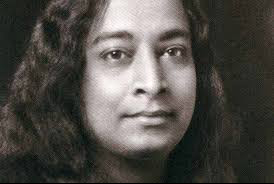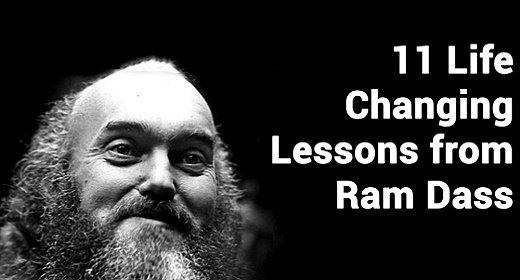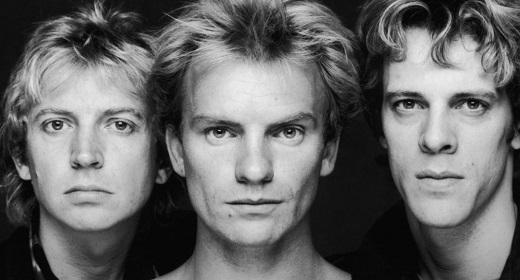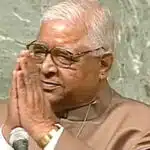by: Swami Krishnananda: In our daily devotions, our ideal of Godhead plays an important role, perhaps the most important role…

Our daily prayers are offered to the great Creator of the universe, God Almighty. But how do we conceive Him? To whom are we offering our prayers? The great Masters of yore who propounded the system of devotion to God have thought of a fivefold principle which can be adopted in our concept of Godhead while we offer prayers or conduct worship, or even do our daily meditations.
These five aspects of the concept of God are known as para, vyuha, vibhava, archa and antaryami. The word para suggests the transcendence of God, something like the Semitic concept of the extra-cosmic existence of the creator of the universe. God is not in this world of wickedness, sin and evil. He is above it, and He is not tarnished by the defects of the world process. Always the offer of prayer is to the above, with a physically up-turned gaze, as it were, to a God who is far, far away from us. This is the transcendent God.
God is really transcendent in one sense because this world of perception and experience is sensorially conditioned, as we have observed; everything that we call the world of experience is sense-bound. Inasmuch as the principle of Godhood is not limited to any form of sensory perception, we may say that God is above the world. We may also be right in holding that He is above space and time, inasmuch as He is not limited to the extension of space or the duration of time. So there is some point in religious devotees sticking to the concept of an utter transcendence and an unbridgeable distance, as it were, between the world and its creator.
Since space is almost dimensionless and the distance that it covers cannot be calculated by the human mind, it would look that an incalculable distance is there between man and God. Many years and several births have to be undergone in order that we may have even an inkling of the existence of God. But is God only transcendent? Is He unreachable? Is He millions of light years away from us? Will He take indefinite time to reach us when we call Him for succour? Or does God take instantaneous action? If He takes endless time by travelling through endless space, we may not still be alive here when He comes. Is this the way God works in this world?
This question is cleared by the other four aspects of the concept of God laid out in this principle. Para is transcendence. The second aspect adumbrated by the devotees is vyuha, a characterisation of the manifestation of God in certain degrees. Vaishnavas, particularly, identify this principle of degrees in the manifestation of God with the concept of Vasudeva, Sankarshana, Pradyumna and Aniruddha. Vasudeva is Sri Krishna. Pradyumna is his son. Sankarshana is his brother. Aniruddha is his grandson. An intensely conceived devout pattern of the object of worship is presented before the devotee’s mind by this elaborate Vaishnava concept of Krishna worship, Vasudeva worship, or Narayana worship.
These categories of Vasudeva, Sankarshana, Pradyumna and Aniruddha correspond to the more philosophical and mystical concepts of God as Brahman, Ishvara, Hiranyagarbha and Virat. From a purely personalistic and utterly devout point of view, it is Bhagvan Sri Krishna and his entourage, Sankarshana, Pradyumna and Aniruddha. But in a more cosmically conceived aspect of the very same degree of manifestation, it is Brahman, the Absolute; Ishvara, the potential creative causal condition; Hiranyagarbha, the subtle manifestation of the universe; and Virat, the actual visible form that creation has taken.
Thus, we can have devotion to God as a transcendent, utterly unreachable, extra-cosmic, super-spatial and super-temporal God. We are free to do that, if that is our choice. But we can also conceive God as manifest and becoming nearer to us in a very prominent manner. If this also is difficult, there is another suggestion. Vibhava is the glory of God as manifest in His incarnations.
The ten avataras of Vishnu are illustrations before us. Or we can consider any one or two of the avataras for the purpose of our particular individual devotion. It may be Rama, Krishna, or Narasimha who we would like to have before us. The incarnation of God is God Himself channelised, as it were, as a conduit of the energy quantum of the cosmos manifest for a particular purpose, so the devotee should not make any distinction between God and His Incarnation. Incarnation is not a limited form of God; it is a specific manifestation of the Universal God for a particular type of action under a given condition of time. But that specific manifestation has also the capacity to assume the original form whenever it becomes necessary – as it happened, for instance, in the case of the life of Sri Krishna, who took the cosmic form several times. The potential of the Universal is present even in this so-called limited, humanised form of the Incarnation.
God’s Incarnation need not necessarily be human. The ten avataras are specifically conceived forms, but ananta, infinite, are the varieties of the way in which God can manifest Himself. A sudden occurrence unexpectedly taking place in the world to redeem the sorrows of humanity may be regarded as an incarnation of God. Even extreme drought and cataclysm are certain actions of the will of God, and wholesale destruction taking place by an epidemic or a tornado is also one of the actions of God for a specific purpose in creation.
The Incarnations, or the avataras of God, vibhava as they are called, may be as we are expecting God to manifest Himself for our satisfaction and for our contemplation and meditation, or He may take a form which we cannot understand. Anything that is excessively powerful, beyond the strength of mankind as a whole; something so intensely beautiful, most enchanting in its symmetry, pattern, beauty and majesty that we will not be able to take our eyes from it; something which is so extremely powerful that we cannot stand before it, a terror; something which is capable of striking wonderment in our mind – all these are God’s manifestations.
Has not the Lord mentioned in the Bhagavadgita, yad yad vibhūtimat sattvaṁ śrīmad ūrjitam eva vā, tat tad evāvagaccha tvaṁ mama tejoṁśasaṁbhavam (Gita 10.41): Wherever there is an excess of something, consider it as a manifestation of God. An excessive coming or an excessive going – either can be God working. If everything comes, wonderful; it is God’s blessing. If everything goes, that also is one of the ways He acts. He can give infinitely, and He can also take away infinitely. Both of these actions of His are of this unintelligible character because of the infinitude of His nature. Abundantly He can give, and abundantly He will take away also.
Well, to put it briefly, this is the concept of the incarnation of God – as God manifests Himself, or as He is supposed to have manifested Himself, as it is recorded in the scriptures. The incarnation of God, or the way in which we can conceive the coming of God, need not necessarily always be as it is described in the scriptures as the well-known ten or twenty-four avataras. You can have your own concept of God. You may expect God to come in some particular manner, and you may deeply feel that God is coming in this way: I wish God to come to me in this manner. And He will come in that way only, though that way may not be one of the twenty-four avataras recorded in the Srimad Bhagavata Mahapurana. Any way, any manner, any form is God’s. Conceptually placed before the mental eye, there can be an Incarnation for your meditations and devotions, or you can choose any of the well-known avataras that are mentioned in the scriptures.
So these are three of the aspects of the concept of God – para, vyuha, vibhava. This also may be a difficult thing for people to conceive. The transcendence of God is, of course, utterly impossible for us to imagine in the mind. The degrees mentioned also are not easy to comprehend. They are sufficiently above us. This Incarnation aspect is also not so very simple as it may appear. So a fourth principle of worship is prescribed, which is archa – the ideal of our worship conceived in the form of a physical representation of an idol, a portrait, a diagram, a picture, a photograph. That also can be regarded as God’s form. If God is everywhere, He can also be in the littlest of things. Was He not in a pillar made of bricks, from which He burst forth in all His glory?
Thus, the daily worship that people sometimes conduct in their own little shrines in their house is also a wonderful form of devotion to God. You can cry and weep before your little idol. It spoke to great saints like Namdev, Eknath, and others. The larger idols in temples of public worship are illustrations of a more elaborately conceived archa avatara of God. The archa avatara is the manifestation of God, the incarnation of God, in the smallest form that you can entertain in your mind. We call it idols or symbols, and it can be any symbol. It may be a shivalingam, a shaligram, or a diagram; it may be a pendant hanging on your neck; it may even be a talisman. It may be anything which you consider as very valuable. All of these are capable of gradually elevating the consciousness of God from lesser concepts to larger concepts.
Para, vyuha, vibhava, archa – four aspects of God’s concept have been stated. The fifth one is antaryami – the indwelling character of God. God is not necessarily and always para, or transcendent. If that is the case, God would take infinite time to reach you. You do not know when you will attain moksha, if this is the case. The immediate, instantaneous presence of God is indicated by the term antaryamitva, the immanence of God.
To some extent, the transcendent character of God contradicts, as it were, the immanence of God. The utter distance is contradicted by the immediate presence of immanence. How could God have such contradictory characters? He is the most distant, the remotest conceivable, and at the same time, very near. How is this possible?
The infinitude of God makes Him appear as very far from us who are finite. The finite individual cannot but imagine the infinite as something very vast and distant. Therefore, we consider God as a transcendent Being merely because of the largeness of the infinitude. But the very same character of God, which is infinitude, also makes Him very near. From one point of view, infinitude means distance. From another point of view, the very same infinitude means inclusiveness of your own existence also. How could you be outside the infinite? And therefore, what can be nearer to you than the infinite? Can you imagine the beautiful implication of the very notion of infinite: the largest and also the smallest, the most remote and also the nearest?
God is all these things: para, vyuha, vibhava, archa, antaryami. This is specially the mode of worship adumbrated in Vaishnava theology, the Sampradaya of Sri Ramanuja, Madhava, Vallabha, Nimbarka, Sri Krishna Chaitanyadeva Gaurangmahaprabhu, the Gaudia Sampradaya system of worship, etc. They accept these aspects of God as valid and as perhaps the most proper way in which we can place the concept of God before us in our daily devotions.
God is conceivable as the Supreme Father because of His creatorship of the whole cosmos. As He is the progenitor of everything, He is really the father of all things. In His intense concern for every one of us, He is the mother of everybody. He is the great grandfather, we may say, beyond even the creator, Brahma. Or we may say He is the father. In the Bhagavadgita, the Lord refers to Himself as mātā dhātā pitāmahaḥ (Gita 9.17): the support, the grandfather, the mother, and the progenitor.
God is not merely a father who has the character of being at a little respectable distance from other members in a family. The father in the family is a respectable person and, therefore, he is a little distant. People do not approach him too frequently or in a very intimate manner. The father is approached only when there is a necessity, not always. We mostly go to the mother for little things. So the fatherhood of God may not be a complete conception of God. He is also a mother, capable of the nearest and most intimate approach.
But our emotions are manifold. We are not satisfied merely by having a father and mother. We want many other things in the world. Our emotions are so very widely spread out in the world of human society and relations that we do not know what will actually give us satisfaction. We even want a friend and a comrade to be near us. It is not possible to be always sitting with the father and mother, though they are very important. We would like to have a chum equal to us. The mother is not equal, she is superior; and perhaps the father is even more superior. But the emotions want an equal, also. Always sitting before some superior is not a very pleasing situation. We would like to be a little more intimate in our own selves.
Is God a friend also? Yes. The Krishna-Arjuna relationship is before us as the most intimate comradeship possible before God and man. Is not a friend very much concerned with the welfare of the friend? He or she will see that the friend is not in trouble at any time, and is always ready to help.
So God is a distant, revered father, a very compassionate, merciful, loving mother, and also our own cosy chum – our own friend. We can summon Him. We need not always be afraid of Him as a father, a judge of the cosmos. God becomes nearer and nearer to us as we conceive Him in these manners. Father is a little distant; mother is nearer, but a friend is nearer still. We would always be chatting with our friend, but we would not always be chatting with our mother or father.
There is also sometimes a feeling of smallness before us in our own selves when we conceive the grandeur of God. Am I equal to any qualities that God has? Are we not humbled before Him? The vision of the cosmic humbled the personality of Arjuna. “Enough of this! Come down please,” he said. We cannot bear even the sight of this majesty. We feel like little, humble servants, dasa, before the great Master.
So the great Father can also be conceived as a Master, and many a time the dasatva attitude is mentioned as a very suitable attitude on the part of a devotee, especially in the Madhava Sampradaya; and in the Vaishnava Sampradaya of Sri Ramanuja, this aspect of dasatva, or sheshatva as they call it, is prescribed. God is called sheshin, and the jiva, individual, is called shesha. God is the Supreme organic inclusiveness and the jiva is an individual part of it, as we are like cells, as it were, in the huge cosmic body of God.
The nearer an object of desire is, the more happy do we feel. This is something well known to everyone. We do not want our object of desire to be kept somewhere far away. That is no good. It must be very near: I must see it. It is not enough if we merely see our object of love; it must be very near us. We have already noted that.
Even nearness is not sufficient. We have to absorb that object into ourselves; then only are we really satisfied. We have to see our lunch. We are satisfied: lunch is coming. It is here, laid out on the table. If it is very far—no, I must go near it. Let me sit on the chair, and look at it. Even then there is no satisfaction; it must become me. The object of our love has to become us, until the difference between the lover and the beloved is destroyed completely. The ideal becomes the real; the most distant becomes the nearest. Even the ‘nearest’ is a poor word; it has to become us.
This is the great Vaishnava devout concept pati-patni samyoga, or the lover-beloved relation. This is considered as the height of devotion and also, at the same time, the most intricate of the forms of devotion to God for any human being to conceive because the difficulty in entertaining this attitude towards God is that we are not accustomed to any kind of experience of union in this world. Even the husband-wife relation is not a real union. It is, to a large extent, conditioned by the different physical individualities, and also social disparity.
The husband and wife are not one person. They may appear to be one in their thoughts, but really they are not. They are physically independent individuals; and socially also, they are recognisable as separate persons. This is an obstacle in the real acceptance of the significance behind this madhuryarasa bhava that we have before us in the concept of God in our devotions.
Only an intensely purified soul can have such a devotion. Otherwise, we are fit for only the other four, because the concept of utter unity is unknown to us. We can neither be one with our money, nor can we be one with our relations, nor can we be one with our land and property. They are all outside. We may love them immensely, but still they are outside. To abolish this outside-ness concept, which is a precondition before the madhuryarasa, it is necessary to rise above even human nature.
Human love is not divine love. Because of our individuality, physicality, isolatedness and social nature, we cannot actually have the accessibility of divine love in our own personality. We can only talk about it, hear about it in scriptures – Gopibhava and others – but how many of us can be like gopis? It is a loss of personality consciousness.
In utter love, when two things become one, the consciousness of personality vanishes. Neither the A nor the B is conscious of itself. A and B merge into a C which is a different transcendence altogether. That C is the most important thing, not A and B. If A and B are conscious of A and B still, even at the time of coming together, that is not love. The C is the divinity, the transcendent aspect of God which manifests itself in all our joys in this world.
Even when we love a thing and feel happy about the object of desire, the happiness does not arise either from us or from the object outside. It is a tentative abolition of the distance between ourselves and the object arisen in the mind, for a fraction of a second, on account of the feeling that the object desired has been possessed. As long as the object is distant and is not possessed, the mind hovers around the object. It is restless; it is active. When the mind is active, it is, for the time being, away from the true Selfhood of consciousness, the Atman. Even if there is a millimetre distance between the Atman and the mind, there is unhappiness in us. This distance continues as long as the object is outside. When the mind feels that it has got what it wanted, it returns once again to the Self. And in this return, it transcends the individuality of itself, and the object, on the other side, also gets merged in the concept of this unity, which is neither the objective nor the subjective.
The experience of love and satisfaction of any kind, even the satisfaction of a good meal, does not arise out of the diet or the substance or the physical condition, merely. There is a third element. Otherwise, we can stuff a delicious meal into a corpse. Will it enjoy the food? The stomach is there. The food also is there. It will not feel the presence of the meal at all.
A third thing is there, which is consciousness. That has to transcend the idea of the body. If we are always thinking of our body when we are eating food, we will not enjoy the food. Nor are we going to enjoy it if we go on thinking of the object. We are at that moment neither thinking of the food, nor of ourselves. A third element which is not recognisable takes place. That is God manifesting Himself. So even the little joy of our breakfast is God manifesting Himself, even in a cup of tea.
What I am trying to make out is that this last-mentioned bhava, madhurya, is not meant for ordinary mortals. An immortal longing for God is essential. Immortal longing for God is necessary to be underlined – not merely a mortal craving for God.
These are some of the ways you can place the concept of God, the ideal of Godhead, before you in your daily devotions. The ritualistic worship that you sometimes see performed in large temples are also certain methods of invocation of God. Rituals are not unnecessary in devotion or religion. Many modern intellectuals feel that they are above rituals. Every act of yours is a ritual. Whatever gesture you make in your daily life – your hello, your namaskar, your “How do you do? Please be seated. When did you arrive?” These gestures are actually rituals that you are performing. “May I offer you a cup of tea, sir?” These are gestures that you are making. That is a ritual.
A ritual is an external gesture of an internal feeling. You may say, “I may have only the feeling. Why should I make the external gesture?” Then you keep quiet if I say, “I love you very much.” What is the good of this? You cannot understand human nature. Human nature is required to be melted down in God-consciousness, somehow or the other; the whole purpose of religious devotion is that. You cannot always be remaining a human being. If that is the case, God will be really far away from you. So you adopt various means, methods and systems of operation in your religious devotion to see that the purely limiting qualities of human nature are overcome in a diviner concept of God.
In one of the processes of ritualistic worship, there is something called nyasa. You may have heard the words anganyasa, karanyasa, etc., but you may not know much of the meaning. Nyasa means placement. You place the limbs of God in your own limbs, as the pujari does. Many a time he may not be even thinking what it is that he is doing, but these are gestures of the devotee by which he correspondingly places every part of the deity on his own personality.
The God that is worshipped is to be worshipped in a manner which is satisfying to the personality, which satisfaction can arise, as we have noted, in an identity of the object with ourselves. A God who is so far away is not going to satisfy us. He has to be very near, and merge into us. Inasmuch as actual merging is difficult, we perform a ritual of the merger: the head of God is my head; the eyes of God are my eyes; the nose of God is my nose; the ears are mine – the fingers, hands, heart, lungs, body, everything. If you are honest in this nyasa process, and are seriously thinking about it, you will feel a sense of shuddering in your personality at that time.
You cannot but shake in your personality if you really identify yourself with something which is not you. A kind of samadhi takes place. This samadhi is the union that you establish between yourself and the idol of worship, which is the symbol of your God by placing the limbs of the body of God on your own limbs (or vice versa, your limbs on God’s), so that when you think, it appears as if your ideal thinks. The worshipper assumes the form of the object worshipped.
In the Saiva Siddhanta system, there is another method of a gradational worship of God, which is known as charya, kriya, yoga and jnana. I mentioned five aspects of devotion from the Vaishnava point of view. Now I am mentioning the Saiva point of view of worship, namely, outer service in the temple such as plucking bael or tulsi leaves, flowers, and serving God only in the vicinity of the temple – on the veranda, the outskirts, as it were, but not actually going inside. There are some persons in the temple who do not go inside. They will be always outside cleaning, bringing items, and so on. That is called charya.
Kriya is the person who cleans the holy of holies every day. He lights the lamp and places the arati before the pujari, and helps him in the actual worship. That is a nearer approach to God than the charya, which is purely outside. More internal is the actual worship itself – that is, the person who worships God becomes identified in yoga. Charya, kriya, are the first two aspects; the third is yoga. Yoga is union of oneself with the worship or the object of worship by the process of nyasa.
In certain temples, the worshipper gets possessed by this nyasa process if he is very honest and sincere in his feelings. People dance in ecstasy. Dancing and music are also the ways in which God is worshipped in some temples. The last one is jnana, which is the calm and quiet contemplation of this identity that has been achieved. After the worship, there are a few minutes of calm and quiet sitting.
So I have placed before you today certain interesting features by which you can daily conduct your devotions. Any one of these methods as would fit and suit your personality may be chosen by you. But God-realisation is somehow a must, and you have to choose one or the other of these ways of worship of God, meditation on God – a daily practice of your oneness with God.









































